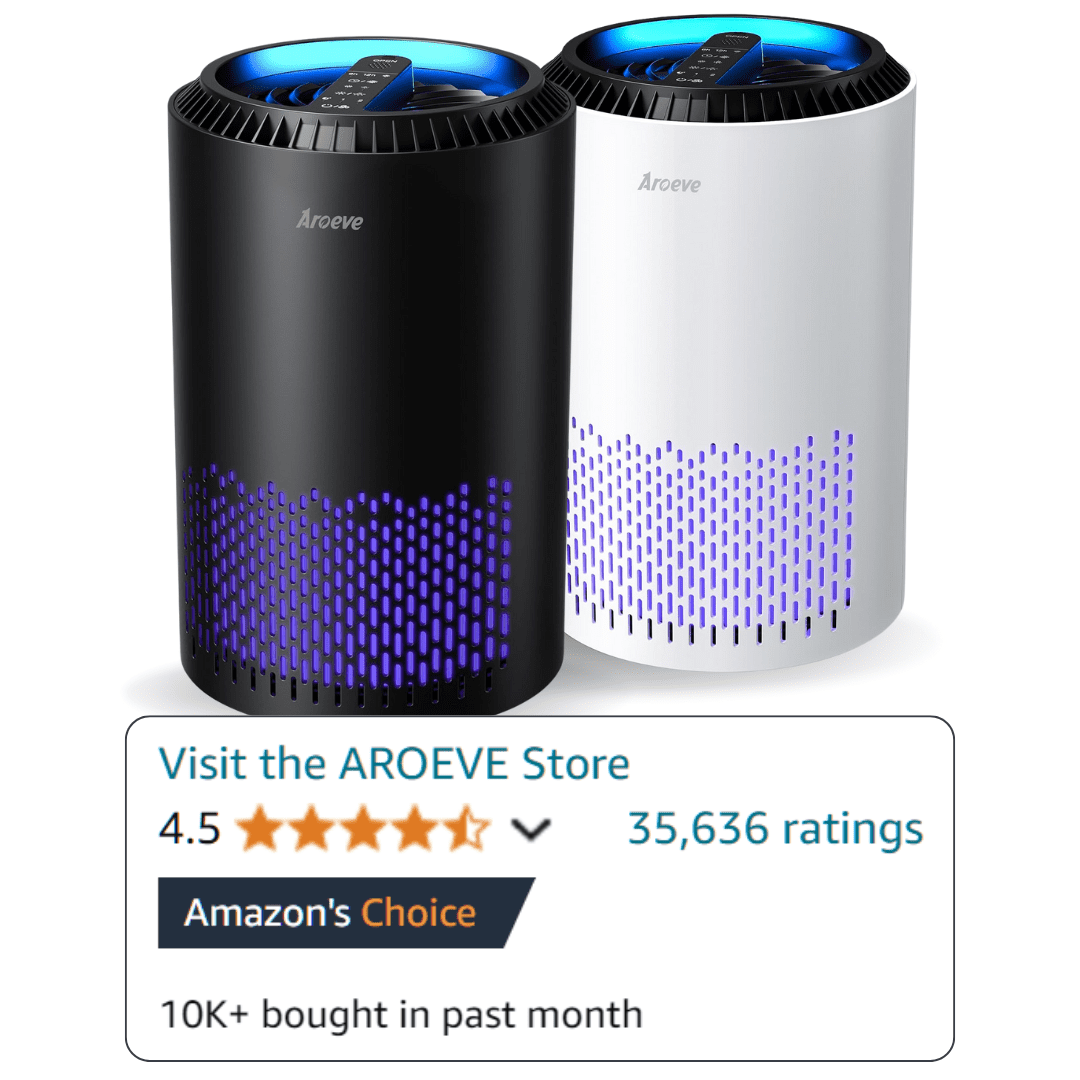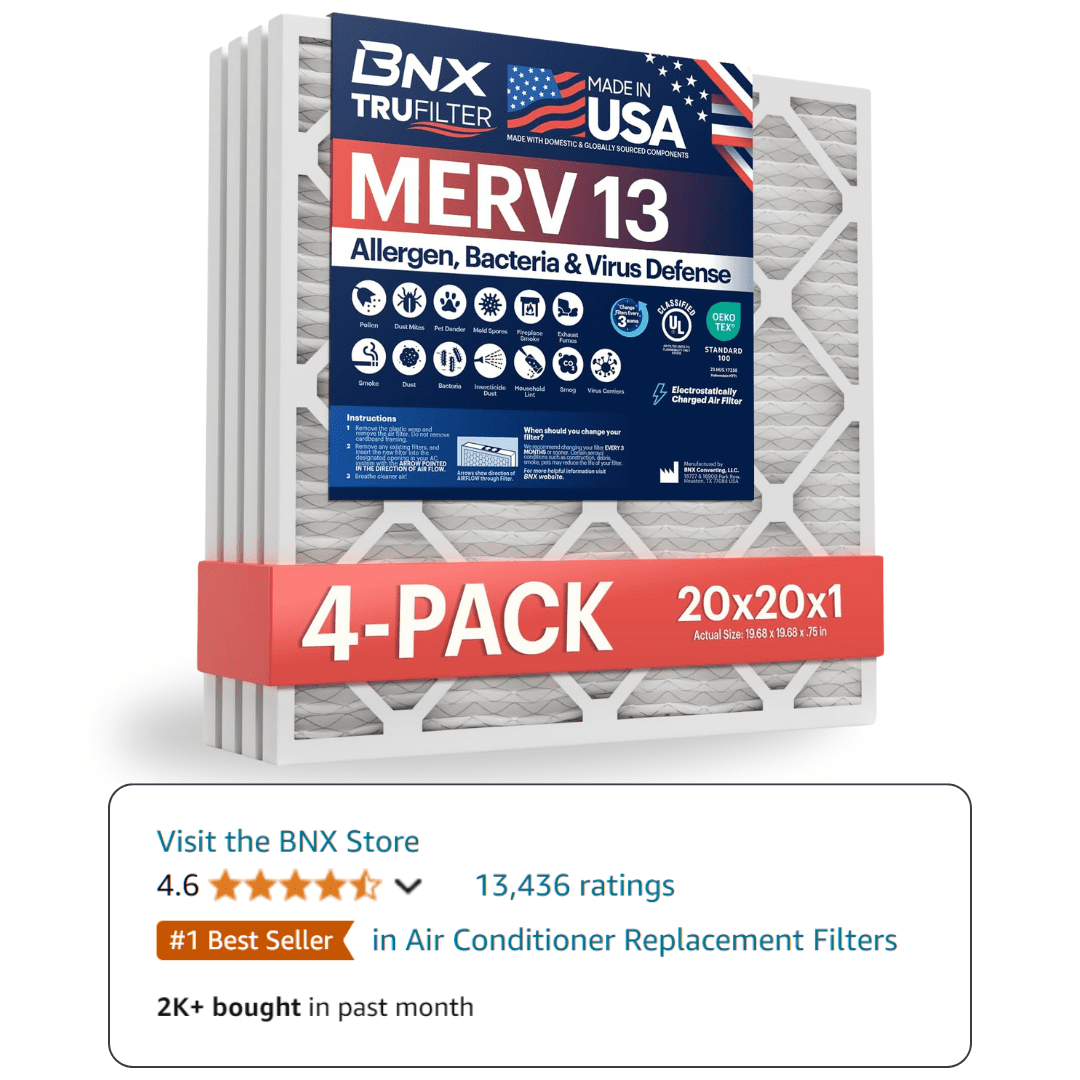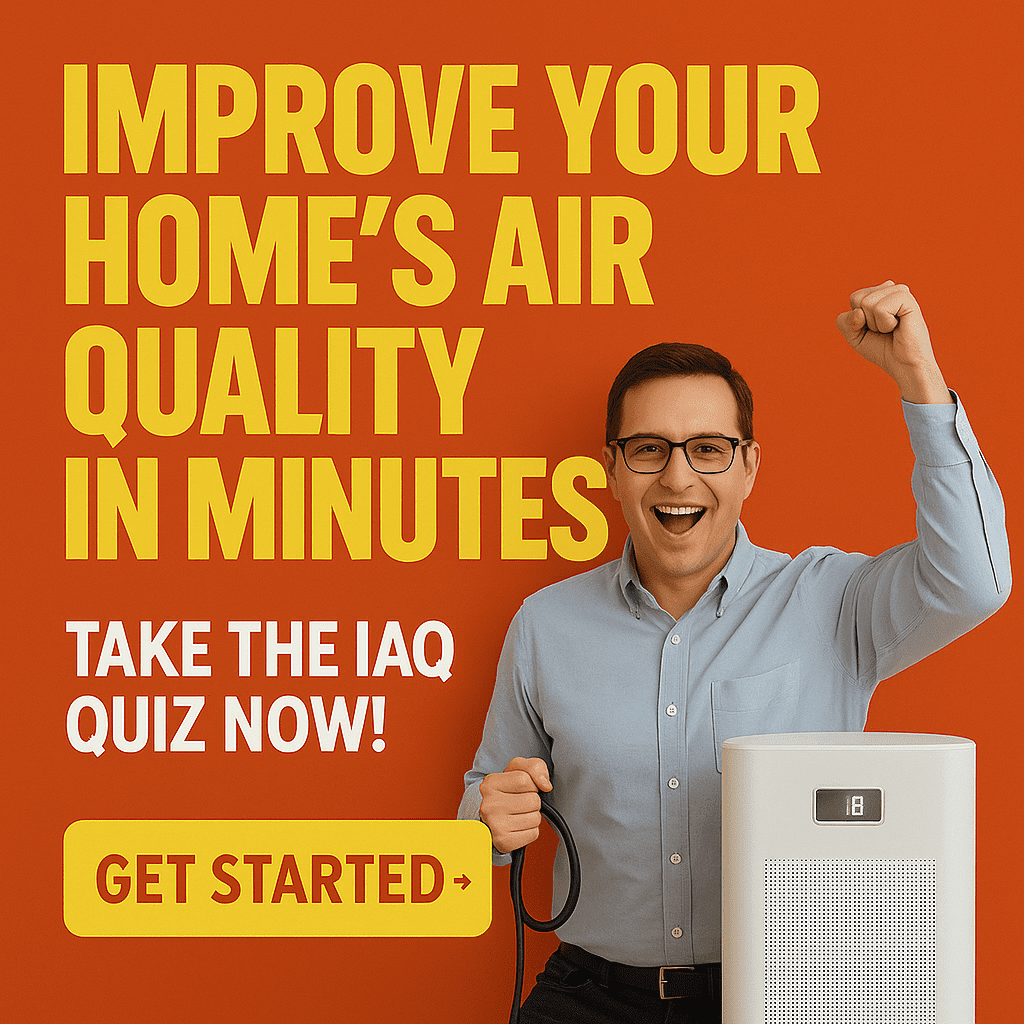The central question for anyone buying an air purifier is straightforward: how long does it take to work?
The direct answer is that a high-quality, appropriately sized air purifier can start to produce noticeable improvements in indoor air quality within 30 to 60 minutes. Some high-powered units may even begin to make a difference in as little as 12 to 20 minutes.
However, this initial improvement is merely the opening chapter of a more complex story.
This baseline is just the point at which the process of air purification becomes perceptible. Achieving optimal, sustained air quality, a state where the full spectrum of indoor pollutants is consistently controlled, can take anywhere from several hours to more than a day. This is particularly true for challenging contaminants like chemical gases and heavy smoke.
The true answer to “how long?” is not a single number but a dynamic outcome dependent on a web of interconnected factors. The speed of purification is governed by the laws of physics, the chemistry of filtration, the specific characteristics of the environment, and the habits of the user.
This guide moves beyond simple estimates to provide a comprehensive, data-backed exploration of every variable that dictates air purifier effectiveness time.
We’ll look into the science behind performance metrics, dissect the anatomy of different filtration technologies, analyze the unique challenges posed by various pollutants, and illuminate the crucial role that operational practices play.
By the end, you will not only understand how long it takes for an air purifier to work but will also grasp why and, most importantly, how to actively and significantly improve that timeline.
The Science of Speed: Understanding the Metrics That Matter
To comprehend how quickly an air purifier can clean a room, you must first understand the technical specifications that govern its speed and efficiency.
These metrics allow consumers to look beyond marketing claims and evaluate a unit’s true potential.
The two most critical performance indicators are the Clean Air Delivery Rate (CADR) and Air Changes per Hour (ACH).
CADR (Clean Air Delivery Rate): The Engine of Your Purifier
The single most important metric for evaluating the raw speed of an air purifier is its Clean Air Delivery Rate, or CADR. Developed and verified by the independent Association of Home Appliance Manufacturers (AHAM), CADR is a standardized measure of the volume of filtered air a unit delivers.
It is expressed in cubic feet per minute (CFM) and provides separate scores for three of the most common indoor airborne particle types: tobacco smoke, dust, and pollen. The principle is simple: a higher CADR number indicates that the unit can clean the air in a given space more quickly.
A significant challenge for consumers is navigating the often-inflated “recommended room size” claims made by manufacturers. A brand might advertise a small, low-powered unit as suitable for a 1,000-square-foot space, but this claim is frequently based on achieving just one air change per hour, a rate widely considered insufficient for effective purification. This is where CADR provides an essential, objective benchmark.
As an independently tested and verified standard recognized by organizations like the U.S. Environmental Protection Agency (EPA), CADR cuts through marketing hyperbole. It provides a standardized measure of a purifier’s raw cleaning power, allowing for a direct, apples-to-apples comparison between models. By understanding and prioritizing CADR, consumers can bypass misleading coverage area claims and select a unit with the genuine power required for their specific environment.
To apply this metric practically, AHAM provides a simple guideline known as the “2/3 Rule.” This rule of thumb states that an air purifier’s Smoke CADR rating should be at least two-thirds of the room’s area in square feet. For instance, a 10-foot by 12-foot room has an area of 120 square feet; according to the rule, it would require an air purifier with a Smoke CADR of at least 80. For more severe conditions like wildfire smoke, AHAM’s recommendation is even more stringent, suggesting a Smoke CADR that is equal to the room’s square footage.
It is also vital to recognize that standard CADR calculations are based on a room with an 8-foot ceiling. Homes with higher or vaulted ceilings contain a significantly larger volume of air. In these cases, simply matching CADR to square footage is insufficient. The total air volume is greater, which means a purifier with a correspondingly higher CADR is necessary to clean the space effectively in a reasonable amount of time.
ACH (Air Changes per Hour): The Frequency of Freshness
While CADR measures a purifier’s power, Air Changes per Hour (ACH) measures the result of that power in a specific space. ACH defines how many times a purifier can filter the entire volume of air within a room in a single hour. For example, a rating of 4 ACH means the purifier can process all the air in the room four times per hour, or once every 15 minutes.
This metric is critically important for health, particularly for individuals with allergies, asthma, or other respiratory conditions, and during seasons with high rates of airborne virus transmission. A higher ACH ensures that pollutants are removed more frequently, keeping their concentration levels consistently low.
Health and engineering bodies like ASHRAE recommend a minimum of 4-5 ACH for allergy sufferers and even higher rates for sensitive environments. For general use, 2-3 ACH may provide a baseline level of cleaning, but for tangible health benefits, a higher frequency is advised.
Consumers can calculate the ACH for any purifier in their specific room using a straightforward formula:ACH=(Room Length×Room Width×Ceiling Height in feet)(CADR in CFM×60 minutes)
This equation allows users to verify a manufacturer’s claims and determine if a unit will meet their health needs.
It is crucial to understand the symbiotic relationship between CADR and ACH. They are not two separate specifications to be weighed against each other; rather, they are two sides of the same performance coin. CADR represents the purifier’s power, while ACH represents the result of applying that power to a specific volume of air. A high ACH cannot be achieved without a sufficiently high CADR for the given room. This reframes the consumer’s perspective.
The question is not “What is this purifier’s ACH?” because a single unit will deliver a different ACH in a small bedroom versus a large living room. The operative question becomes, “What CADR do I need to achieve my desired ACH in my room?” This shifts the focus from a misleading, context-dependent feature (ACH) to the fundamental, objective measure of power (CADR), enabling a more informed and effective purchasing decision.
The Anatomy of an Air Purifier: How Filtration Technology Dictates Effectiveness
The speed and thoroughness of air purification are dictated by the technology inside the machine. Not all purifiers are built alike, and understanding the different filtration methods is essential to matching a device to the specific pollutants one aims to remove. The most effective residential air purifiers use a multi-stage system, recognizing that indoor air pollution is not a single problem but a complex mixture of different types of contaminants.
The Particulate Powerhouse: True HEPA Filtration
The cornerstone of modern air purification is the High-Efficiency Particulate Air (HEPA) filter. It is critical to understand that HEPA is a performance standard, not merely a marketing term.
To be certified as a True HEPA filter, a standard set by the U.S. Department of Energy, the filter must be rigorously tested and proven to capture at least 99.97% of airborne particles at the specific size of 0.3 microns (μm). This size is known as the Most Penetrating Particle Size (MPPS) because it is the most difficult for filters to trap.
A common misconception is that HEPA filters function like a simple sieve, only catching particles larger than their pores. The reality is far more sophisticated, relying on a combination of three distinct physical mechanisms to trap a wide range of particle sizes:
- Impaction: Larger, heavier particles (typically >1 μm), such as dust and some pollen, have too much inertia to follow the curving airstream around the filter’s fibers. They travel in a straight line and collide directly with a fiber, becoming embedded.
- Interception: Mid-sized particles, which are light enough to follow the airflow, are captured when they pass within one radius of a fiber and get snagged.
- Diffusion: The smallest, lightest particles (<0.1 μm), such as viruses and smoke particles, move in a random, erratic pattern due to collisions with gas molecules in the air, a phenomenon known as Brownian motion. This chaotic movement dramatically increases the probability that they will collide with and stick to a filter fiber.
This multi-mechanism approach leads to a crucial and counter-intuitive strength of HEPA technology. The 0.3-micron specification is not a minimum size limit but rather a “worst-case” efficiency benchmark. Because of the power of diffusion, HEPA filters are actually more efficient at capturing particles that are significantly smaller than 0.3 microns, as well as those that are larger. This fact, supported by research from NASA, provides strong reassurance of a HEPA filter’s effectiveness against the most dangerous ultrafine particles, including many viruses and bacteria.
Consumers must be vigilant against products marketed with terms like “HEPA-type” or “HEPA-style.” These are unregulated marketing phrases that do not guarantee adherence to the strict 99.97% at 0.3-micron standard. Such filters are typically less dense and may only capture larger particles, failing to provide the level of protection offered by a True HEPA certified filter.
The Gas & Odor Specialist: Activated Carbon Filters
While HEPA filters are the undisputed champions against particulates, they are completely ineffective against the other major category of indoor pollutants: gases, odors, and Volatile Organic Compounds (VOCs). This is where activated carbon filters are essential.
Instead of physically trapping particles, activated carbon works through a chemical process called adsorption. The carbon material is “activated” with heat and steam, creating a vast network of microscopic pores. This process gives the carbon an immense surface area. A single gram can have a surface area equivalent to multiple football fields. As air containing gaseous pollutants passes through the filter, molecules of VOCs (like formaldehyde from furniture), smoke odors, and cooking smells chemically bond with this enormous surface, effectively trapping them.
The effectiveness of this process depends heavily on two factors: the quantity and quality of the carbon. A thin, flimsy pad that is merely dusted with carbon has very little surface area and will become saturated with pollutants almost immediately. A truly effective system will use a filter containing several pounds of granular activated carbon pellets, which provides a much larger capacity for adsorption and a significantly longer lifespan.
A Multi-Stage Defense: The Power of Combination
The reality of indoor air is that it is rarely contaminated with just one type of pollutant. A typical home environment contains a mixture of both particulate matter and gaseous pollutants. This “two-pollutant problem” necessitates a multi-stage filtration solution.
A HEPA-only purifier, for example, might remove dust effectively but will do nothing to combat a lingering cooking odor. Conversely, a carbon-only filter would reduce the odor but leave allergenic dust and dander circulating in the air. Therefore, to comprehensively address the full spectrum of common indoor pollutants, an air purifier must be a combination unit.
A high-quality combination system typically includes three key stages:
- Pre-Filter: This first line of defense is a simple mesh screen that captures the largest airborne particles, such as pet hair and large lint fibers. By trapping this large debris, the pre-filter protects the more delicate inner filters from clogging prematurely.
- True HEPA Filter: This is the core of particulate filtration, capturing the fine and ultrafine particles that pass through the pre-filter.
- Activated Carbon Filter: This final stage adsorbs the gases, odors, and VOCs that are too small to be captured by the HEPA filter.
Ancillary Technologies: A Critical Look at UV-C and Ionizers
Some air purifiers are marketed with additional technologies, most commonly UV-C light and ionizers. While they may sound advanced, their real-world effectiveness and safety warrant critical examination.
- UV-C (Ultraviolet) Light: UV-C light has germicidal properties, but for this process to be effective, a microbe needs sufficient exposure time. In many consumer-grade air purifiers, the air passes by the UV bulb so quickly that the exposure is inadequate to neutralize all passing pathogens. Furthermore, some UV lamps can produce ozone as a harmful byproduct, a known lung irritant.
- Ionizers and Electrostatic Precipitators: These technologies release charged particles (ions) that cause airborne pollutants to clump together and fall onto surfaces like walls and floors. While this does remove them from breathable air, it does not remove them from the room and they can be easily stirred back into the air later. Like UV lamps, ionizers can also generate harmful ozone.
These ancillary technologies should be viewed as potential supplements, not substitutes for the core filtration system. The foundation of an effective and safe air purifier rests on its mechanical (HEPA) and adsorbent (Carbon) filters.
| Technology | Primary Target | Strengths | Limitations |
| True HEPA | Particulates (PM2.5, dust, pollen) | Extremely high, certified particle capture efficiency. Proven and standardized technology. | Ineffective against gases, odors, and VOCs. Requires filter replacement. |
| Activated Carbon | Gases, Odors, VOCs | Highly effective at adsorbing chemical pollutants and odors through a massive surface area. | Ineffective against particulates. Becomes saturated and requires replacement. |
| UV-C Light | Microorganisms | Can neutralize pathogens by damaging their DNA/RNA. | Effectiveness is highly dependent on exposure time. Can produce harmful ozone. Ineffective against particles/gases. |
| Ionizer | Ultrafine Particles | Causes small particles to clump and fall from the air. Generally quiet. | Does not remove particles from the room. Can produce harmful ozone. Less effective overall than HEPA. |
The Dynamic Environment: Core Factors That Influence Purification Time
The time it takes for an air purifier to clean a room is not a static attribute of the machine itself. It is a dynamic outcome determined by the interaction between the purifier and its environment. Several core factors can dramatically speed up or slow down its performance.
The performance of an air purifier should be viewed as part of an “air purification ecosystem.” This system includes the machine’s power (CADR), the room’s characteristics, the sources of pollution, and the user’s operational habits.
- Room Geometry & Air Volume: A larger room contains a greater volume of air and will take longer to clean. It is crucial to consider the room’s total cubic footage, especially in rooms with high or vaulted ceilings.
- Initial Pollutant Load: The starting condition of the air is a major determinant. A room with heavy smoke from cooking will take much longer to clean than a room with just a small amount of dust.
- Pollutant Type: Different pollutants present unique challenges. Large particulate matter like dust is captured relatively quickly. Gaseous pollutants like VOCs from new paint are more difficult to remove and require a much longer time.
- Airflow & Fan Speed: An air purifier’s performance is directly proportional to its fan speed. A higher speed moves more air, increasing the unit’s effective CADR and ACH, resulting in faster cleaning.
- Filter Health: A dirty, saturated filter severely restricts airflow. This drastically reduces the unit’s CADR and efficiency, significantly increasing the time it takes to clean the room. Regular filter maintenance is non-negotiable for optimal performance.
Real-World Timelines: From Dust to VOCs
By synthesizing the data on purifier performance and environmental factors, it is possible to establish realistic, scenario-based time estimates for cleaning a room.
These timelines are practical guidelines to help users manage expectations. In situations with a constant source of new pollution, such as active cooking, the purifier is engaged in a continuous battle.
After an initial period, the system may reach an “equilibrium” where the rate of removal is matched by the rate of introduction. The purifier’s job then is not to “finish” cleaning but to continuously suppress the pollutant concentration to a new, safer steady-state level.
| Room Size (sq. ft.) | Pollutant Type | Initial Pollutant Level | Estimated Time for Significant Reduction |
| Small (<200 sq ft) | Particulates (Dust, Pollen) | Low-Medium | 30 – 90 minutes |
| Medium (200-400 sq ft) | Particulates (Dust, Pollen) | Low-Medium | 1 – 3 hours |
| Large (>400 sq ft) | Particulates (Dust, Pollen) | Low-Medium | 2 – 5 hours |
| Any Size | Smoke (Particles & Gases) | High | 2 – 8 hours for particles; continuous operation for gases |
| Any Size | VOCs (Paint, Formaldehyde) | High | 4 – 48+ hours; requires continuous operation |
| Any Size | Mold Spores | High | 24 – 48 hours for airborne spores; source must be remediated |
For General Dust & Allergens (Pollen, Pet Dander)
- Mechanism: This is primarily a particulate problem, making it an ideal task for a True HEPA filter.
- Timeline: For these common particulates, a properly sized purifier can make a noticeable difference within 30 to 60 minutes. Significant reductions in airborne allergen concentrations are typically achieved within a few hours of continuous operation.
- Context: Scientific studies confirm that HEPA purifiers can significantly reduce airborne pet allergen levels, improving allergy symptoms. However, heavier allergen particles may settle on surfaces quickly, making regular cleaning a necessary partner to air purification.
For Smoke (Wildfire, Tobacco)
- Mechanism: Tackling smoke is a dual-front battle. It requires a HEPA filter for the fine particulate matter (PM2.5) and a substantial activated carbon filter for the hundreds of gaseous pollutants and VOCs that cause the odor.
- Timeline: The timeline is bifurcated. The visible particulate matter can be cleared relatively quickly, with significant reductions in PM2.5 levels possible within a few hours. Removing the gaseous components and neutralizing the persistent odors is a much slower process that can take many hours of continuous operation.
- Context: Studies during wildfire events show HEPA cleaners can reduce indoor PM2.5 by up to 74%. However, these studies also find HEPA filters alone do not address gaseous components, underscoring the necessity of a robust activated carbon filter.
For Mold Spores
- Mechanism: Mold spores are biological particulates that are readily captured by HEPA filters.
- Timeline: In a room with a high concentration of airborne mold spores, a powerful air purifier running continuously can achieve a significant reduction in spore levels within 24 to 48 hours.
- Critical Caveat: An air purifier is a mitigation tool for airborne mold, not a remediation solution. It can capture spores in the air but cannot address the source. If the underlying moisture issue is not properly remediated, mold will continue to release new spores, creating a never-ending cycle. You must address the source of the mold.
For VOCs (Paint Fumes, New Furniture Off-Gassing)
- Mechanism: This is purely a gaseous pollutant problem and represents one of the most significant challenges. This task falls entirely to the activated carbon filter. Success requires a purifier with a high-quality, high-capacity carbon filter.
- Timeline: This is typically the longest and most demanding purification task. While a capable purifier can begin to reduce VOC concentrations within a few hours, achieving a significant and safe reduction level can take 24 to 72 hours or even longer of continuous, uninterrupted operation.
- Context: Fresh paint can off-gas for weeks, and some materials release formaldehyde for years. The most effective strategy is a combination of aggressive ventilation (opening windows to flush out initial fumes) and continuous air purification to adsorb the residual VOCs.
Maximizing Your Air Purifier’s Performance
While technical specifications set a purifier’s potential, user habits determine its real-world performance. Following these best practices can significantly shorten the time it takes to clean a room.
Rule #1: Placement is Paramount. For optimal performance, place the unit in a central location with at least 3 to 5 feet of clearance from walls and furniture. This allows for unimpeded 360-degree air intake and distribution. Placing a unit in a corner or behind a sofa will severely cripple its efficiency.
Rule #2: Create a Closed System. Air purifiers work most efficiently in a sealed space. When doors and windows are closed, the purifier can repeatedly cycle through a contained volume of air. Opening a window introduces a constant stream of new pollutants, forcing the purifier to work much harder and making it difficult to “catch up.”
Rule #3: Run it 24/7 for Consistent Quality. Indoor air quality is in a constant state of flux. The single most effective strategy is to run the air purifier continuously, 24 hours a day. This is especially critical for individuals with health sensitivities. Modern, Energy Star-certified air purifiers are highly efficient and consume minimal electricity.
Rule #4: Master Your Fan Speed. For the fastest possible purification, run the unit on its highest fan speed setting. For general maintenance and quieter operation, a lower speed is often sufficient. While “Auto Mode” is convenient, its sensors can vary in sensitivity, and a manual medium or high speed often yields more reliable results.
Rule #5: Commit to Maintenance. A clogged filter is an ineffective filter. Adhering to the manufacturer’s recommended maintenance schedule is essential. Pre-filters may need monthly cleaning, carbon filters replacement every 3-6 months, and HEPA filters replacement every 6-12 months, depending on use.
Rule #6: A Holistic Approach. An air purifier works best as one component of a larger strategy. Combine its use with regular vacuuming (preferably with a HEPA vacuum), dusting with a damp cloth, and controlling pollutants at their source by using kitchen exhaust fans and choosing low-VOC products.
Achieving Your Clean Air Timeline
The time required for an air purifier to clean a room is not a simple, fixed number. It is a dynamic equation influenced by a triad of interconnected elements: the inherent power of the device, the specific challenges of the environment, and the actions of the user. This relationship can be summarized as follows:
(Purifier Power ÷ Environmental Challenge) x User Optimization = Real-World Speed
A high-powered purifier provides the raw capability for rapid cleaning. However, this power is modulated by the size of the room and the concentration of pollutants it must combat. Finally, the entire process is either amplified or diminished by your own practices. Proper placement, a sealed environment, continuous operation, and diligent maintenance are the force multipliers that unlock a purifier’s true potential.
While initial improvements can often be perceived in as little as 30 to 60 minutes, a comprehensive understanding of these variables is key to achieving a truly healthy indoor environment. By taking an active role in managing your “air purification ecosystem,” you can ensure you are receiving the maximum benefit and protection from your investment.



